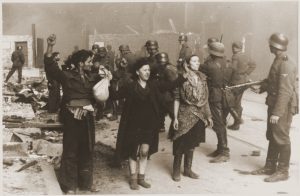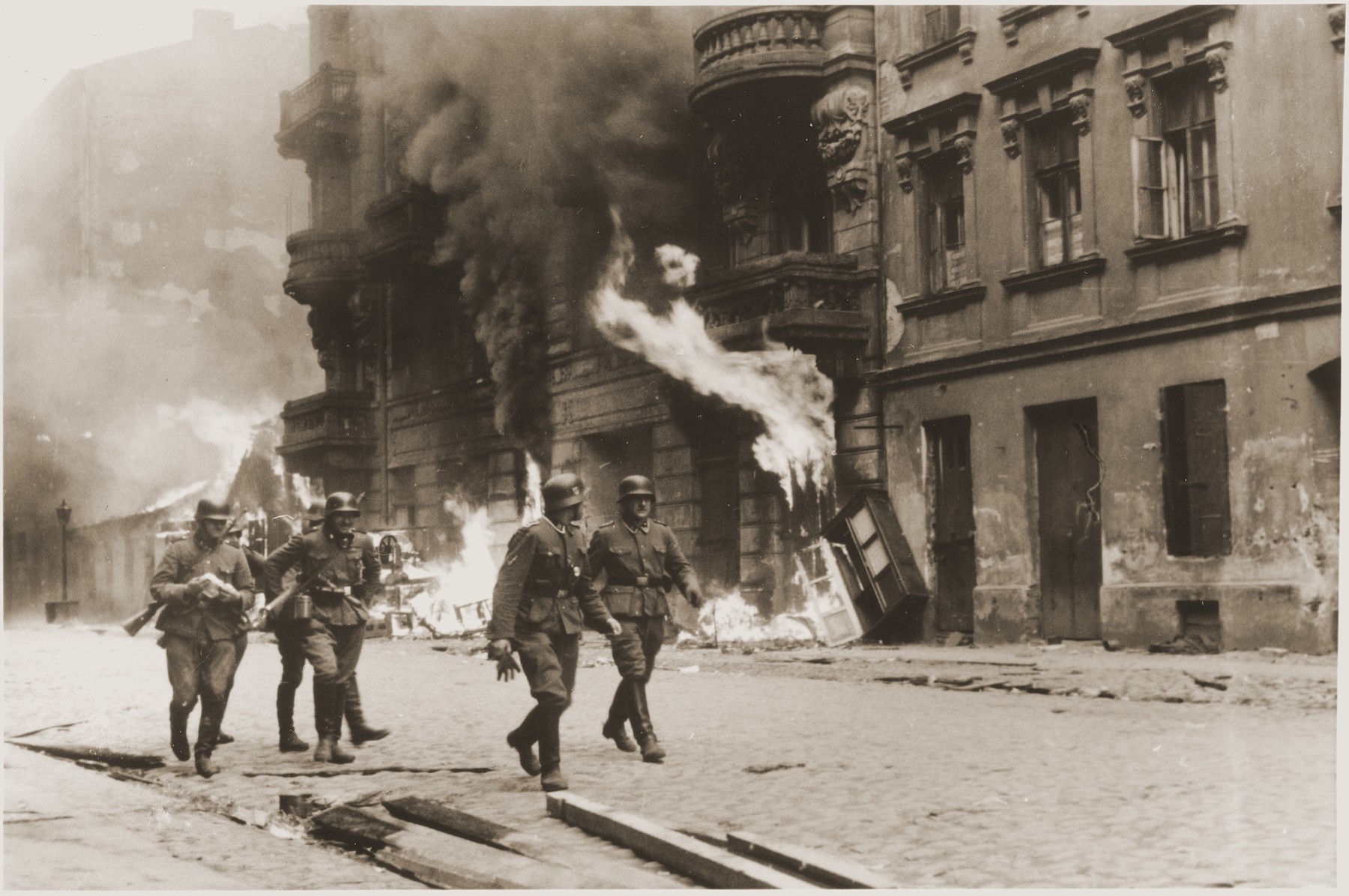Part 3C: Resistance and Rebellion in Ghettos and Camps

SS troops guard members of the Jewish resistance captured during the liquidation of the Warsaw ghetto, April 1943. Photo credit: USHMM #46193
Resistance to Nazi terror occurred throughout the system of camps and ghettos, as it did across Nazi-occupied Europe. Many prisoners engaged in remarkable acts of defiance while under the constant watch of Nazi guards. Prisoners with the same political, religious, or national backgrounds often worked together to thwart Nazi terror. Resistance came in many forms, including armed resistance, spiritual resistance, covert communications, sabotage, or defiance of Nazi orders.

Distant view of smoke from the Treblinka concentration camp in Nazi-occupied Poland, set on fire by prisoners during a revolt. Photo credit: USHMM, Bildarchiv Preussischer Kulturbesitz
Jewish resistance movements developed in nearly 100 ghettos in Nazi-occupied Eastern Europe. The largest single uprising by Jews occurred in the Warsaw ghetto in the spring of 1943, when hundreds of Jewish civilians rose up in the face of imminent deportation. Despite being vastly outnumbered and outgunned, the Jewish fighters fought Nazi SS and German police units in the streets for nearly a month, before the Nazis successfully quelled the uprising. Ultimately, Warsaw’s 57,000 remaining Jews were killed within a month.
Despite harrowing odds and threat of certain death, Jewish prisoners also revolted in the extermination camps, including daring escapes from Sobibor and Treblinka. There were also numerous acts of rebellion in Auschwitz-Birkenau, including when Jewish workers set fire to one of the gas chambers and crematoria.
